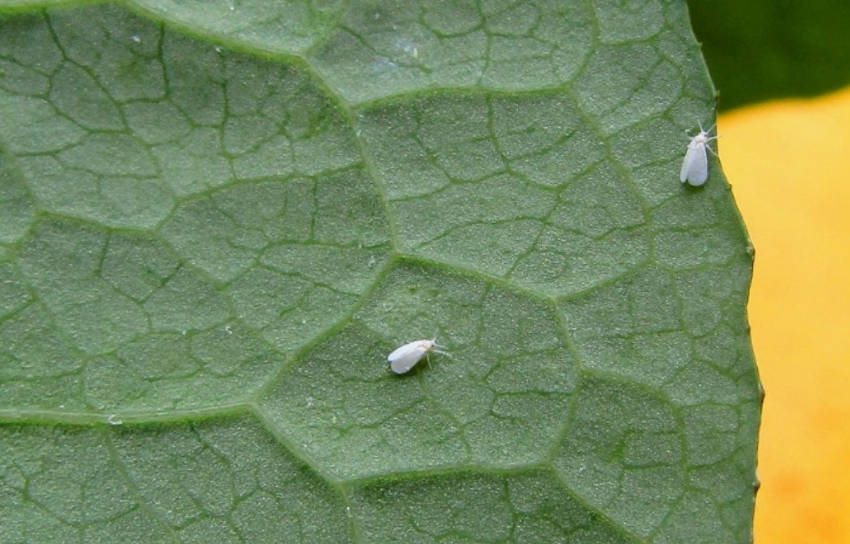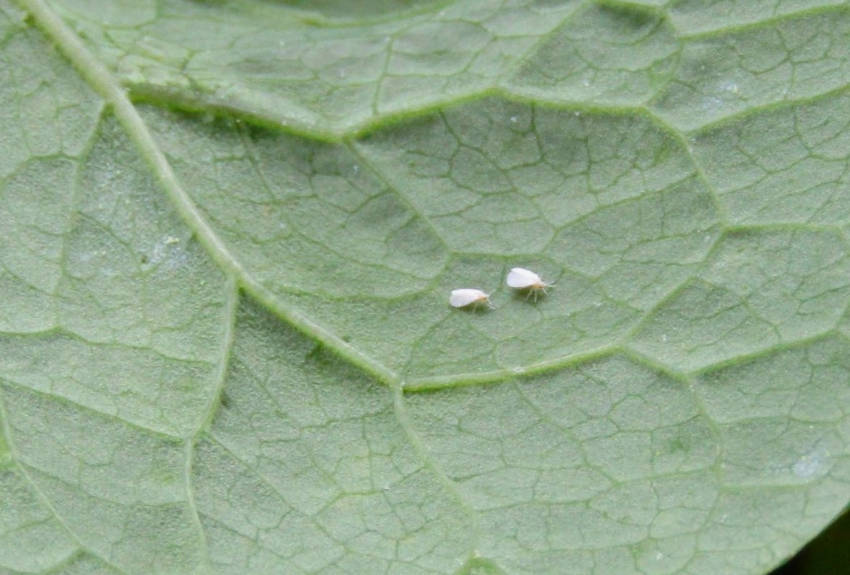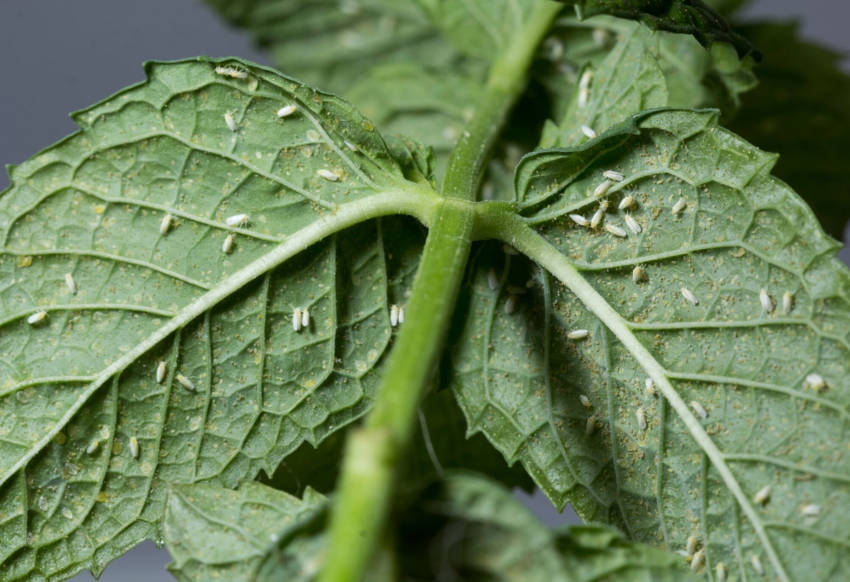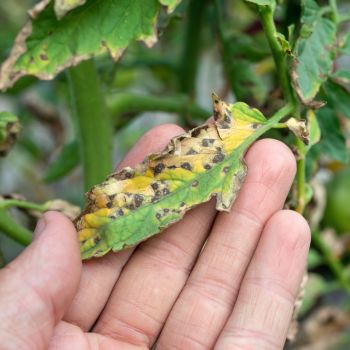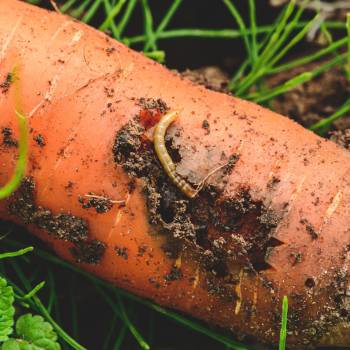Greenfly/aphids are a sorely well-known nuisance for most gardeners, but they're not the only sap-sucking pest you need to worry about. Whitefly are a close relative of the aphid, and can cause similar problems when their numbers start to escalate out of control.
And in some ways, whitefly present an even greater difficulty than aphids. Unlike aphids, all adult whitefly have wings and are highly mobile, so infestations can take hold and spread extremely rapidly under the right conditions.
Luckily, it's possible to fight back and stop the insects from taking over completely. But first you need to spot a problem before it starts to run out of control.
How Can You Recognise Whitefly?
The term whitefly can refer to many distinct species, with around 20 different ones found in Australia alone. Membership of the whitefly club has more to do with appearance and behaviour than strict biological classification.
Adult whitefly are 1-2mm long, triangular, and with large wings swept back from the head. They're often described as resembling tiny white moths.
Whitefly nymphs are oval and a pale yellowish green, hairy, and can be mistaken for scale at first glance. In this stage of life, most whitefly species are largely immobile, feeding and developing in place.
The insects prefer warm and moist conditions, and are often called greenhouse or glasshouse whitefly because they thrive most easily under glass. However, they're just as happy to colonise outdoor plants in mild to warm areas.
Just like aphids, whitefly tend to congregate on the underside of leaves, although in a full infestation they'll feed anywhere on a plant. One of the most distinctive behaviours of whitefly is their tendency to swarm in groups when you brush against their host plant, forming a short-lived cloud before settling back down to feed.
Why Are Whitefly a Problem?
As with their aphid cousins, the main problems whitefly cause is down to their sap-sucking diet. As they feed, they add digestive enzymes to the plant's system. This directly weakens the plant, slowing growth and reducing resistance to disease.
To add insult to injury, the whitefly produce large amounts of honeydew as waste. This sweet, sticky substance builds up on the foliage below, blocking sunlight and further stunting growth. The honeydew also encourages the development of sooty mould and other fungal infections.
Lastly, whitefly often spread viruses and other pathogens as they move from plant to plant, and can even transport other pests such as broad mite.
All this activity combined can lead to yellowing plants, wilting, and eventual leaf loss. But even in less dramatic circumstances, infested plants will grow slowly, set seed less reliably, and ripen fruits slowly and unevenly.
This may seem a lot of damage for such a tiny fly to cause, but the problem is worsened by sheer numbers. A single adult can lay hundreds of eggs over its potential 4-6 week lifetime, and with up to seven generations a year, an infestation can quickly get out of hand.
Which Plants Are Targets?
While the many species of whitefly mean a large range of plants can be targeted, those most at risk are tomatoes and members of the cabbage family. However, almost any tender, sappy plant can be infested, including peppers, squash, cucumbers, okra, beans, and sweet potato.
In the flower garden, some whitefly species have a preference for orchids, begonia, chrysanthemums, and asters. With these ornamentals, the honeydew deposits will spoil the appearance as well as affecting growth.
How to Discourage Whitefly
Once an infestation begins, it can be an uphill struggle to contain it. Doing what you can to discourage whitefly from gaining a foothold should be your first priority.
- Don't overcrowd your plants, keeping plenty of space between them for air circulation to keep humidity down. This discourages egg laying to keep numbers under control.
- Water your plants in the mornings rather than the evenings, to keep overnight dampness to a minimum.
- Avoid excessive amounts of nitrogen-rich fertiliser, as this encourages the tender growth that whitefly home in on.
- Mulch your veggie beds well, both to keep moisture in the ground and to prevent eggs from overwintering on the soil surface.
- Protect vulnerable plants with fine netting, especially in spring when growth is tender.
How to Remove a Whitefly Infestation
However, despite your best prevention efforts, the chances are you'll be faced with a whitefly infestation at some point.
You may be tempted to reach for an insecticide spray, and while these are effective, they're a broad-brush solution that can also kill beneficial insects such as ladybirds and hoverflies.
What's more, whitefly have highly adaptable immune systems, and quickly build up a tolerance to many specific insecticides. Use chemicals too readily, and you may wind up strengthening the whitefly at the expense of other insects.
So in general, physical control methods are a surer bet than chemical ones. Here are eight effective routes to take.
- Disposal of Affected Plants
Wilted plants and dropped leaves should be disposed of carefully to avoid spreading eggs, larvae, or adults around your garden. Consider burning the waste rather than composting it, although some gardeners place the plants in a deep freezer to kill all whitefly before adding to the compost heap. - Use Water Control
Use a hosepipe or a strong garden spray to knock the flies off infested plants. Once they fall soaking to the soil, they're unlikely to find their way back up. - Use a Soap Spray
If a simple water jet isn't enough to dislodge your visitors, try spraying them with a mixture of soap, cooking oil, and water. This will clog down and smother the insects, and they can be later washed away harmlessly. - Nicotine Spray
If you have a smoker in the family, try soaking tobacco in water overnight and use the resulting liquid as an insecticidal spray. While this can be effective, it's not a surefire solution as some whitefly species have evolved to feed on tobacco plants, and so nicotine holds no fears. - Turning the Tables
If the various sprays aren't wholly effective, you can turn the tables on these sap-sucking insects using a handheld vacuum cleaner. Being careful not to damage your plants, disturb the whitefly so that they cloud into the air, and suck them up as they fly. Dispose of the cleaner's contents carefully afterwards. - Sticky Yellow Traps
Whitefly are instinctively attracted to the colour yellow. Smear Vaseline, washing up liquid, or another sticky substance over strips of bright yellow card, and hang them around the plants you want to protect. The insects will be drawn in and become firmly stuck. - Encourage Predators
And lastly, attracting natural whitefly predators will keep numbers under control in the long term. Ladybirds, lacewings, hoverflies, and parasitic wasps can all be encouraged by growing a wide range of flowering plants to produce blooms across as much of the growing season as possible.
As with so much in gardening, working to create and sustain a healthy and diverse eco-system will do the most to control whitefly numbers. Just keep a lookout for the early signs of an infestation, and you can keep their damage to an acceptable level.
